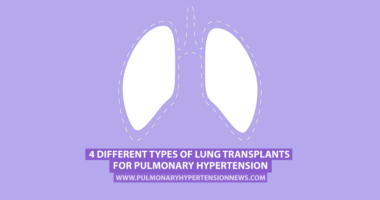Study ID’s risk factors of early mortality after IPAH lung transplant
Need for assisted breathing, elevated bilirubin levels among predictors

Life support measures, specifically the need for assisted breathing, and elevated blood levels of bilirubin, a marker of liver damage, are among the factors that predict worse outcomes after a lung transplant in people with idiopathic pulmonary arterial hypertension (IPAH), a study reports.
A new predictive model that includes these and other factors distinguished idiopathic, or no known cause, PAH patients at high risk of death from those with a lower risk.
“A better understanding and appropriate management of candidates at high risk for early complications and mortality will translate into improved long‐term outcomes,” the researchers wrote in “Predictors of early mortality after lung transplantation for idiopathic pulmonary arterial hypertension,” which was published in Pulmonary Circulation.
While new therapies have improved outcomes of people with IPAH, not all patients have benefited. For these patients, a lung transplant remains the only viable alternative to improve long‐term survival.
IPAH patients have a high risk of mortality soon after a lung transplant, but the prognosis improves considerably for those who survive the first three months. For this reason, “strategies to optimize perioperative [around the time of surgery] management and early outcomes are likely to have a large impact on long‐term survival,” wrote researchers at the Corewell Health and Michigan State University who developed a predictive model using data from the United Network for Organ Sharing (UNOS) database to identify risk factors of death in IPAH adults within 90 days (three months) after a lung transplant.
Mortality risk factors in IPAH after lung transplant
They analyzed data from 693 adults with IPAH who underwent a lung transplant alone or with a heart transplant between 2005 and 2021. The participants had severe disease, as indicated by high pulmonary vascular resistance, that is, blood vessel resistance to blood flow, an impaired six-minute walk distance test, which assesses exercise capacity and endurance, and the fact that 30% were hospitalized. Also, 10% required assisted breathing. Almost all (93%) had a double lung transplant.
In the first 90 days after the transplant, 71 patients died, representing a mortality rate of 10.2%. This was significantly higher than other lung conditions, such as cystic fibrosis (3.65%), idiopathic pulmonary fibrosis (5.67%), and chronic obstructive pulmonary disease (4.39%). Transplant failure was the cause of 28% of deaths, followed by the failure of several organs (17%), and infection (14%).
Three days after the transplant, 38% of patients still needed a breathing tube and 14% were using extracorporeal membrane oxygenation (ECMO), a type of support where the patient’s blood is temporary diverted to an artificial lung for gas exchange, allowing the heart and lungs to rest.
ECMO dependency three days after transplant was significantly higher among the patients who eventually died compared with survivors (35% vs. 11%). Dialysis also was higher in nonsurvivors, 55% vs. 15%. Dialysis is a procedure where waste products and excess fluid are filtered from the blood when the kidneys can no longer function normally.
A statistical analysis that assessed the link between each of the selected parameters and the risk of early mortality was conducted and the parameters that showed a significant prediction were included in a multivariate analysis, which assesses the relationship between several variables.
The results indicated ECMO support and/or mechanical ventilation at transplant, as well as blood levels of total bilirubin above 2 mg/dL were independent predictors of early mortality. Additional independent predictors included pulmonary artery diastolic pressure and percent predicted of forced expiratory volume in one second, which is a measure of how much air can be exhaled in one second after a deep breath. Diastolic pressure is assessed between heartbeats when the heart relaxes.
These parameters were used to build a predictive model of mortality risk at 90 days. The model was able to distinguish patients with a high mortality risk of 20% or higher from low-risk patients whose mortality was 5% or lower.
The researchers said identifying high‐risk candidates might compel using “more intensive strategies” to relieve complications that lead to early mortality. “Early referral and timely listing are critical to reduce the need to transplant patients with advanced disease. Our findings may also be relevant for strategies to optimize the allocation of donor organs for IPAH,” they said.








